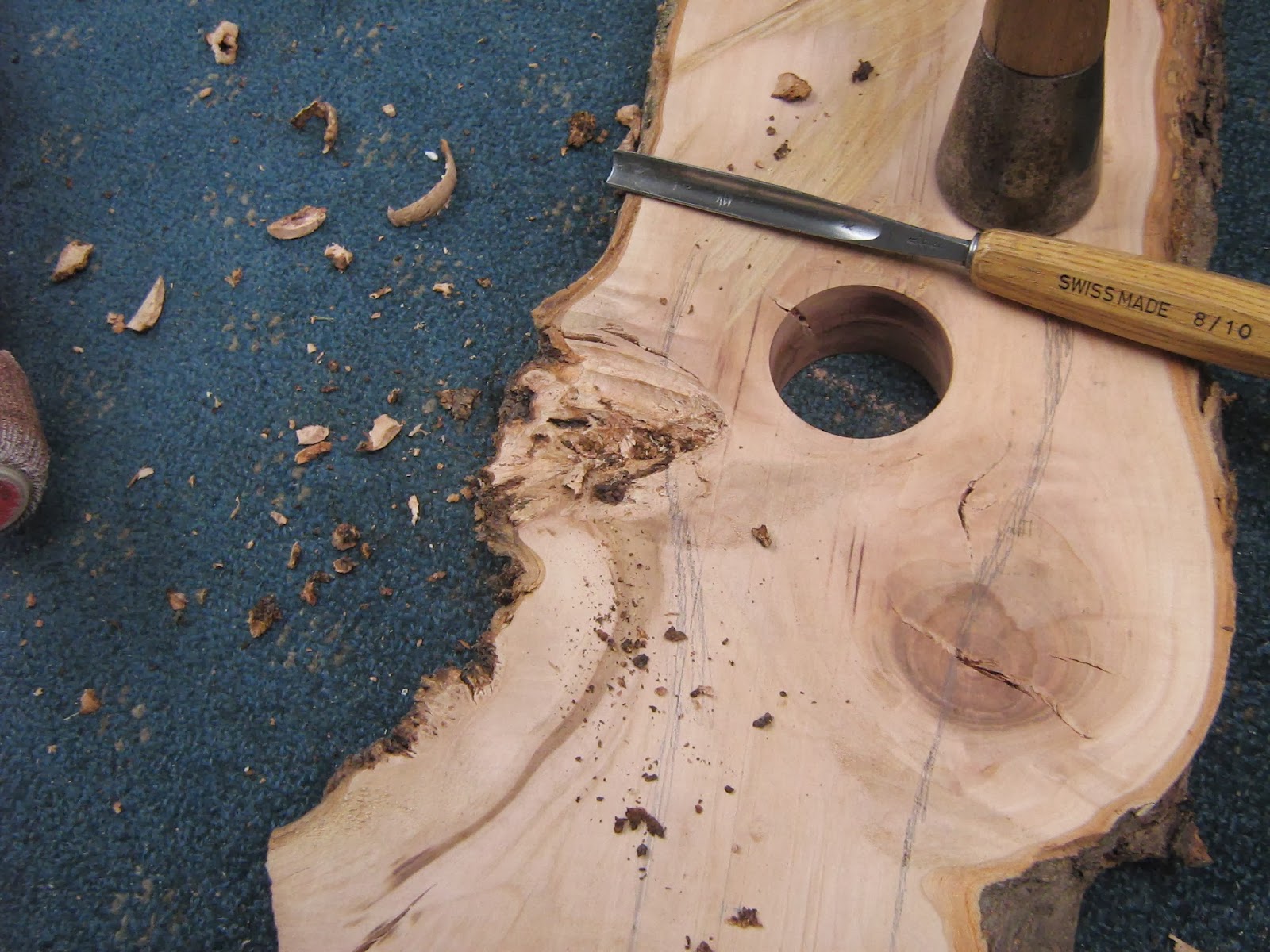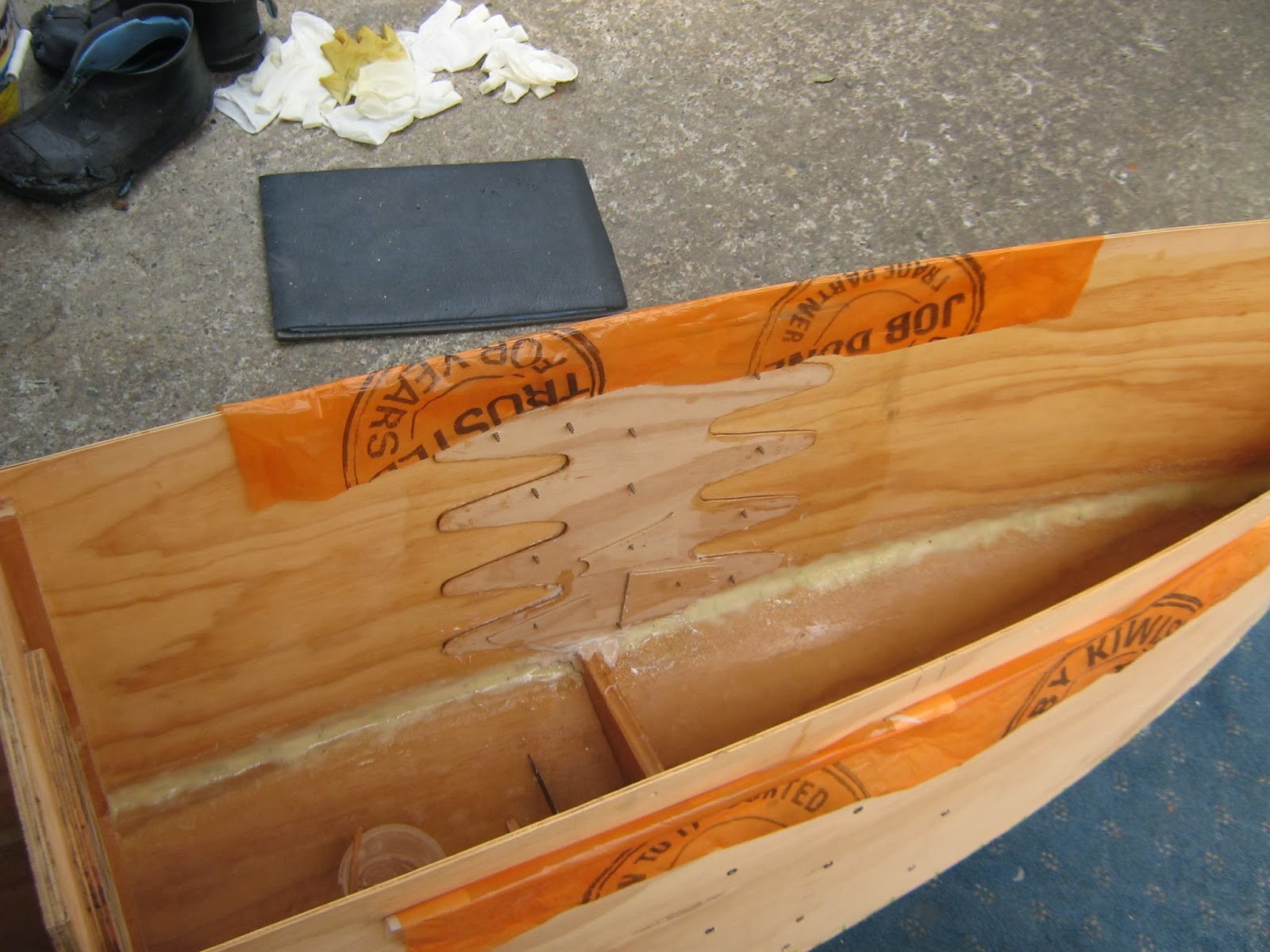rudder and mast mounts
Being immeasurably stupid I mislaid my Gary Dierking book (I found it afterwards, having, in a worringly unprecedented move, actually put it away in the bookshelf) and was forced to read Percy Blandford's Build Your Own Boat by way of substitute.
Mr. Blandford says (p 30) "There are many pitfalls in boat designing and the beginner is advised not to attempt to design his own boat, but to accept a design by an expert and follow it".
There is a great deal to be said for Mr. Blandford's attitude not least because he's survived for so long - the man's 101 - but of course he was writing well before the Internet obviated the need for books because now all you have to do is ask a question on-line and seven billion people will all give you the benefit of their advice, and for free. The downside is that if the beginner attempts nothing new then twenty-odd years ago Mr. Larrington and all the other young engineering students in the world would never have built The Purple Nasty and we'd all still be riding Common Bicycles.
Having largely built the shell of the hull I've been forced to consider how to get power into it and steering out of it. Not having thought about it before I went and bought a belt sander, this being a sneaky ploy so I can pretend I'm still working on it without the trauma of having to decide what to do next. Then I sat on the bench and gazed at the two half-hulls until a daughter, passing after a half-hour interval, enquired sweetly "Has it built itself yet?" So I thought I should get on with it, which is horrible because it means arriving at a decision.
The decision involved the following considerations.
1. I don't know what I'm doing.
2. My sailing experience comprises falling into the Norfolk sea off the trapeze of Stuart Oliver's 505, and huddling inside an Optimist on the briny deep for a couple of summers.
3. Strong summer onshore winds.
4. If it shunts, it'll need two rudders and therefore two rudder mounts.
5. Oho no, Graeme said I should use the Optimist rig at first. (See 3. above.)
6. I could make one of the rudder mounts also act as a mast step for the Optimist mast. Then it could double as a tacking sailing canoe while I find out a bit more about it.
7. The structures for putting power into the hull and getting steering out of it have to spread the load out into a fragile wooden shell.
8. The mast step has to be stronger than the flimsy pine which is all that the local woodyard has in stock.
I dug out some planks of applewood sawn from trunks rescued from the orchard a few years back. Applewood is dense and strong and under-rated. It occurred to me to cut a hole for the mast through one of the knots, and then the grain would naturally wrap itself round the mast.
Next it occurred to me to cut a slightly larger hole through the other knot, and then I could pretend that
a) I was cleverly following the grain and
b) I was cunningly allowing for a slightly larger diameter mast, should one such abruptly appear.
The mast collar was routed to remove weight; the mast step was chiselled, ditto. The chisel is a wickedly dangerous rotary thing that only fits in Graeme's angle-grinder, not in mine, and since his concept of undoing the grinding disc is to clamp it in a vice I very kindly made him a spanner for it, using a bit of sawn-off bicycle frame and a rusty nail. It was not essential that the nail was rusty: this was a bonus, because my working philosophy is to gather what everyone else has thrown away and see if I can make anything useful out of it. This is in marked contrast to Mr. Knight, who if he needs a six-foot piece of tritium dioxide hardened tungsten disulphidificated superstrongstuff, will send a rocket ship to Jupiter to import it and then machine it to size on his Adept lathe.
The rotary chisel, not in an angle grinder. Top plank lightened with a router; bottom plank chiselled in about a fifth of the time.
The stubby bit that will stick out for the rudder mount is going to have to follow the grain to retain any strength, but I don't mind that. I once used to build longbows out of yew, and you become rather fond of wood that follows the grain.
To spread the load I finally recalled the crowned shape of aeroplane reinforcements, designed to avoid stress concentrations, and by drilling holes and interdigitating the wooden fingers I made four wooden plates and glued 'em and screwed 'em on the inside of the hull where the mast/rudder mounts will go.
The bits of plastic bag are to stop the deck gluing in. The deck is pushed into place to act as a former while the epoxy sets
All the screw-holes remain to be filled with epoxy but I don't mind that, and there are a lot of them because I'm frightened of bubbles of air between the layers of plywood.
Now it's back to Indecision Mode while I try to steel myself for the great trauma of deciding it's necessary to cut holes in the side of the hull to glue the mast step and rudder step in place.
Mr. Blandford says (p 30) "There are many pitfalls in boat designing and the beginner is advised not to attempt to design his own boat, but to accept a design by an expert and follow it".
There is a great deal to be said for Mr. Blandford's attitude not least because he's survived for so long - the man's 101 - but of course he was writing well before the Internet obviated the need for books because now all you have to do is ask a question on-line and seven billion people will all give you the benefit of their advice, and for free. The downside is that if the beginner attempts nothing new then twenty-odd years ago Mr. Larrington and all the other young engineering students in the world would never have built The Purple Nasty and we'd all still be riding Common Bicycles.
Having largely built the shell of the hull I've been forced to consider how to get power into it and steering out of it. Not having thought about it before I went and bought a belt sander, this being a sneaky ploy so I can pretend I'm still working on it without the trauma of having to decide what to do next. Then I sat on the bench and gazed at the two half-hulls until a daughter, passing after a half-hour interval, enquired sweetly "Has it built itself yet?" So I thought I should get on with it, which is horrible because it means arriving at a decision.
The decision involved the following considerations.
1. I don't know what I'm doing.
2. My sailing experience comprises falling into the Norfolk sea off the trapeze of Stuart Oliver's 505, and huddling inside an Optimist on the briny deep for a couple of summers.
3. Strong summer onshore winds.
4. If it shunts, it'll need two rudders and therefore two rudder mounts.
5. Oho no, Graeme said I should use the Optimist rig at first. (See 3. above.)
6. I could make one of the rudder mounts also act as a mast step for the Optimist mast. Then it could double as a tacking sailing canoe while I find out a bit more about it.
7. The structures for putting power into the hull and getting steering out of it have to spread the load out into a fragile wooden shell.
8. The mast step has to be stronger than the flimsy pine which is all that the local woodyard has in stock.
I dug out some planks of applewood sawn from trunks rescued from the orchard a few years back. Applewood is dense and strong and under-rated. It occurred to me to cut a hole for the mast through one of the knots, and then the grain would naturally wrap itself round the mast.
Next it occurred to me to cut a slightly larger hole through the other knot, and then I could pretend that
a) I was cleverly following the grain and
b) I was cunningly allowing for a slightly larger diameter mast, should one such abruptly appear.
The mast collar was routed to remove weight; the mast step was chiselled, ditto. The chisel is a wickedly dangerous rotary thing that only fits in Graeme's angle-grinder, not in mine, and since his concept of undoing the grinding disc is to clamp it in a vice I very kindly made him a spanner for it, using a bit of sawn-off bicycle frame and a rusty nail. It was not essential that the nail was rusty: this was a bonus, because my working philosophy is to gather what everyone else has thrown away and see if I can make anything useful out of it. This is in marked contrast to Mr. Knight, who if he needs a six-foot piece of tritium dioxide hardened tungsten disulphidificated superstrongstuff, will send a rocket ship to Jupiter to import it and then machine it to size on his Adept lathe.
The rotary chisel, not in an angle grinder. Top plank lightened with a router; bottom plank chiselled in about a fifth of the time.
The stubby bit that will stick out for the rudder mount is going to have to follow the grain to retain any strength, but I don't mind that. I once used to build longbows out of yew, and you become rather fond of wood that follows the grain.
To spread the load I finally recalled the crowned shape of aeroplane reinforcements, designed to avoid stress concentrations, and by drilling holes and interdigitating the wooden fingers I made four wooden plates and glued 'em and screwed 'em on the inside of the hull where the mast/rudder mounts will go.
The bits of plastic bag are to stop the deck gluing in. The deck is pushed into place to act as a former while the epoxy sets
All the screw-holes remain to be filled with epoxy but I don't mind that, and there are a lot of them because I'm frightened of bubbles of air between the layers of plywood.
Now it's back to Indecision Mode while I try to steel myself for the great trauma of deciding it's necessary to cut holes in the side of the hull to glue the mast step and rudder step in place.
Labels: gluing sheets with epoxy, hull reinforcements, mast collar, mast step, rotary chisel












0 Comments:
Post a Comment
Subscribe to Post Comments [Atom]
<< Home